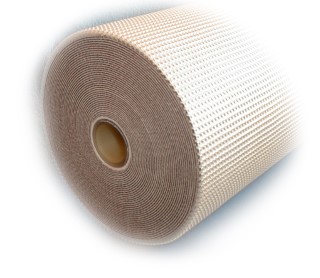UF spiral
The ultrafiltration spiral membranes from Alfa Laval are based on a unique construction of either polypropylene or polyester support material in a hygienic full-fit design that provides optimum cleaning conditions. The spiral membranes are available with different ultrafiltration membrane types and in different combinations of length, diameter and feed spacer size
The pores of the membranes used for Alfa Laval ultrafiltration spiral membranes are small, having a cut-off range from 1,000 to 100,000 molecular weight (MWCO), and the applied pressure is relatively low. Salts, sugars, organic acids and smaller peptides pass through the pores of the membrane, whereas proteins, fats and polysaccharides are retained.
Using appropriate ultrafiltration membranes also makes it possible to fractionate a feed stream into two distinct streams, with each stream containing dissolved components with different molecular weights.
The Alfa Laval ultrafiltration spiral membranes are a popular choice for many processes applied in the food, beverage, dairy, biotech and pharmaceutical industries where they are used for product recovery for example of an active from fermentation broth, as well as product purification, fractionation and concentration.
Alfa Laval offers a comprehensive range of spiral membranes with different characteristics and properties.
Dairy series
For dairy applications Alfa Laval offers two series of tailor-made spiral membranes: The Dairy UF-PE series and the Dairy UF-pHt series. The spiral membranes of these series are USDA approved.
The dairy UF-PE spiral membrane, which is manufactured with polyester support material, is available with MWCO values between 5,000 and 20,000 dalton.
The dairy UF-pHt spiral membrane, which is cast on polypropylene backing paper, is available with MCWO values between 5,000 and 20,000 dalton.
ETNA series
The ETNA spiral membrane is made of composite fluoro polymer cast on polypropylene (PP) backing material. The ETNA spiral membrane is available in two different types with a molecular weight cut-off value (MWCO) of either 1,000 or 10,000 dalton.
FS series
The FS spiral membrane is also made of composite fluoro polymer cast on polypropylene backing material. The FS spiral membrane has a MWCO value of 100,000 dalton.
RC-PE Series
RC-PE series
The RC-PE spiral membrane is made of regenerated cellulose cast on polyester support material. The RC-PE spiral membrane has a MWCO value of 10,000 dalton.
RC-PP series
The RC-PP spiral membrane is made of regenerated cellulose cast on polypropylene support material. The RC-PP spiral membrane has a MWCO value of 10,000 dalton.
UF-PE series
The UF-PE spiral membrane is made of either polysulphone or polyethersulphone cast on polyester support material. The UF-PE spiral membrane is available in different types with MWCO values ranging from 5,000 to 25,000 dalton.
UF-pHt series
The UF-pHt spiral membrane is characterized by its tolerance towards high pH and temperature. It is made of polysulphone or polyethersulphone cast on polypropylene backing material. The UF-pHt spiral membrane is available in different types with MWCO values ranging from 2,000 to 100,000 dalton.
UFX-pHt series
The UFX-pHt spiral membrane is characterized by its ability to tolerate high pH and temperatures. The membrane, which is cast on polypropylene support material, is made of polysulphone, permanently hydrophilic. The UFX-pHt spiral membrane has a MWCO value of 10,000.
Benefits
- cost-effective operation due to low energy consumption
- long life time compared to traditional dead-end filtration
- cover a broad spectrum of flux properties and pore sizes
- available in different combinations of length, diameter and spacer size
- sanitary design with all materials in compliance with EU Regulation (EC) 1935/2004, EU Regulation 10/2011 and FDA regulations (CFR) Title 21
- same membrane types available as both flat sheet membranes and spiral membranes
- suitable for extensive range of processes
- manufactured by Alfa Laval's own membrane centre

Πως δουλεύει
The basic technology behind membrane filtration involves using a semi-permeable membrane to separate a liquid into two distinct streams.
Pumping this liquid across the surface of the membrane creates a positive trans-membrane pressure that allows any components smaller than the porosity of the membrane to pass through, forming the permeate.
Any components larger than the pore size simply cannot pass through, and remain behind in what is called the retentate. The surface of the spiral wound membrane is kept free of blockages by the force of the liquid flow moving parallel to the membrane surface.
Efficient spiral membrane filtration
A spiral membrane comprises of several membrane 'envelopes' with two membrane sheets separated by a permeate spacer mesh, each glued to a central permeate collection tube.
Between each pair of envelopes there is a spacer which creates the feed channel, allowing the feed to flow across the length of the spiral wound membrane, whilst the permeate passing through the membrane into the membrane envelope flows in a spiral pattern to the permeate collection tube.
Red = Feed/retentate.
Green = Permeate.

